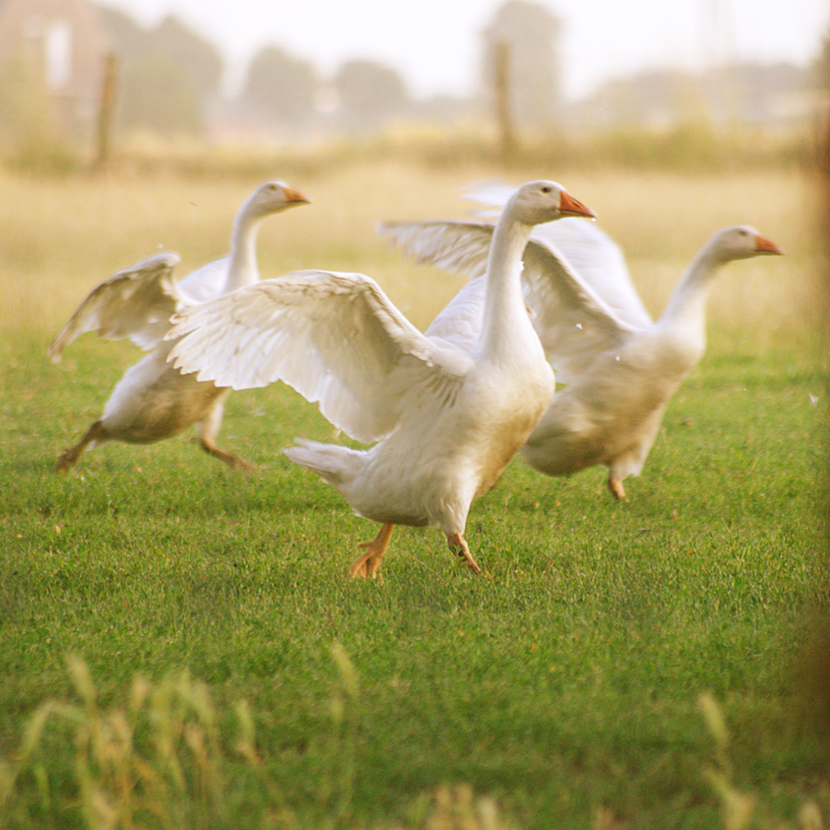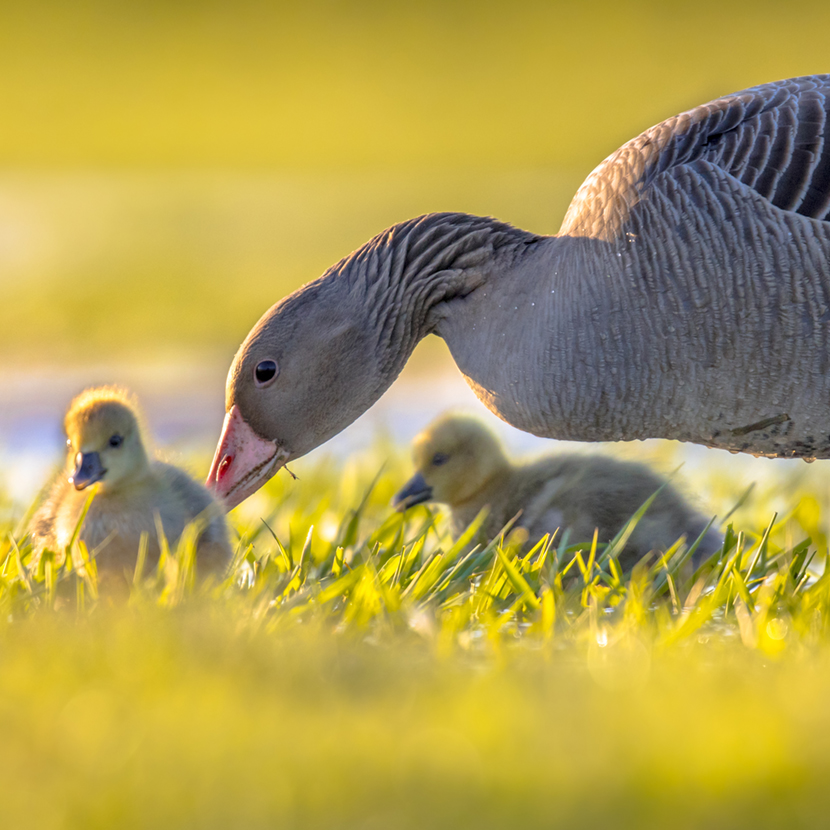ANIMAL WELFARE
Different times alto-goose-er

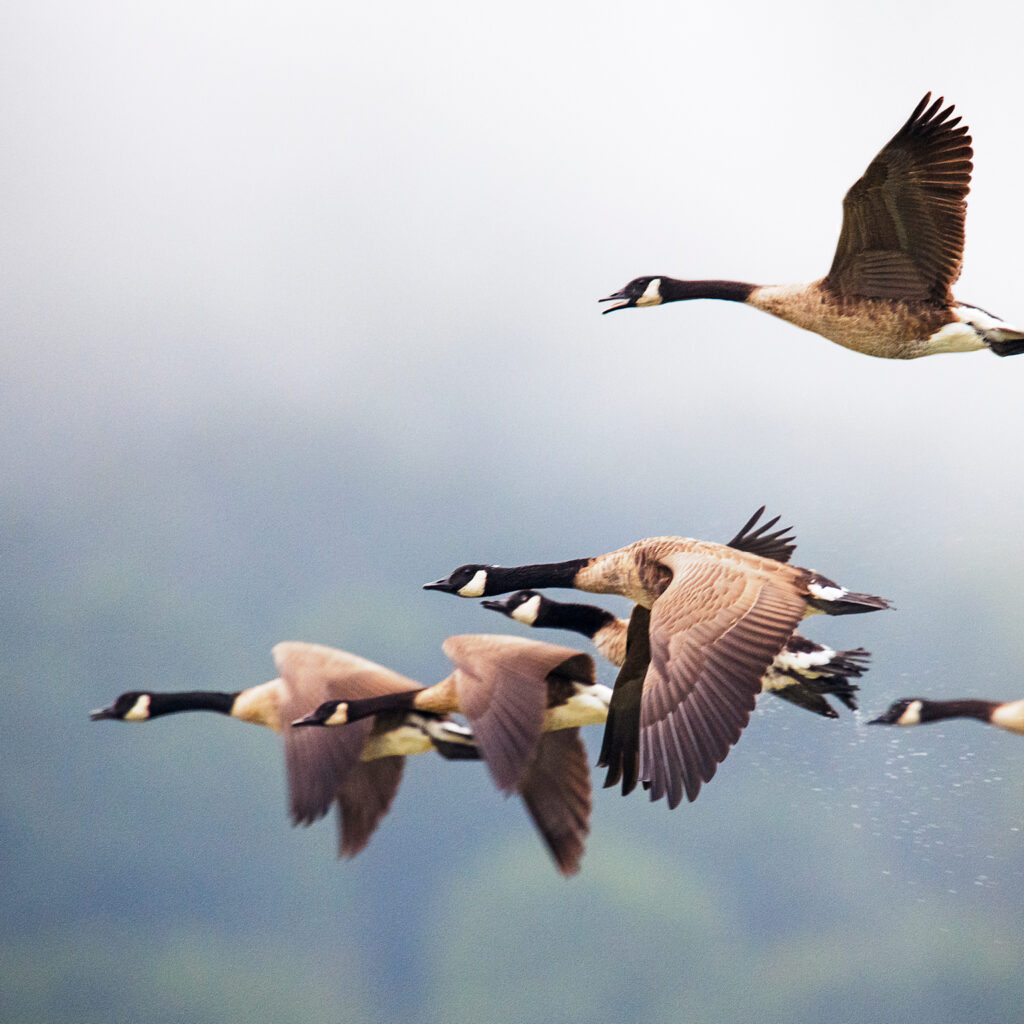
Goose season starts in autumn. Different species of wild geese have come together and are making their way south. The north of Germany, in particular, is an area that’s known worldwide by ornithologists (who study birds) who go there to witness the spectacle of umpteen thousand geese coming together alongside other bird species to set off on their annual migration.
While their relations commence their long journeys (often of over 6000km), domestic geese in Germany have a not-so-nice time ahead of them: they’re about to be eaten to celebrate St Martin’s Day or Christmas. Thousands of animals have to lose their lives so that these traditional meals can take place. At the same time, many people don’t even know what domestic geese are capable of, or how intelligent and sociable these animals are.
Domestic geese were some of the earliest birds in the world to be domesticate …
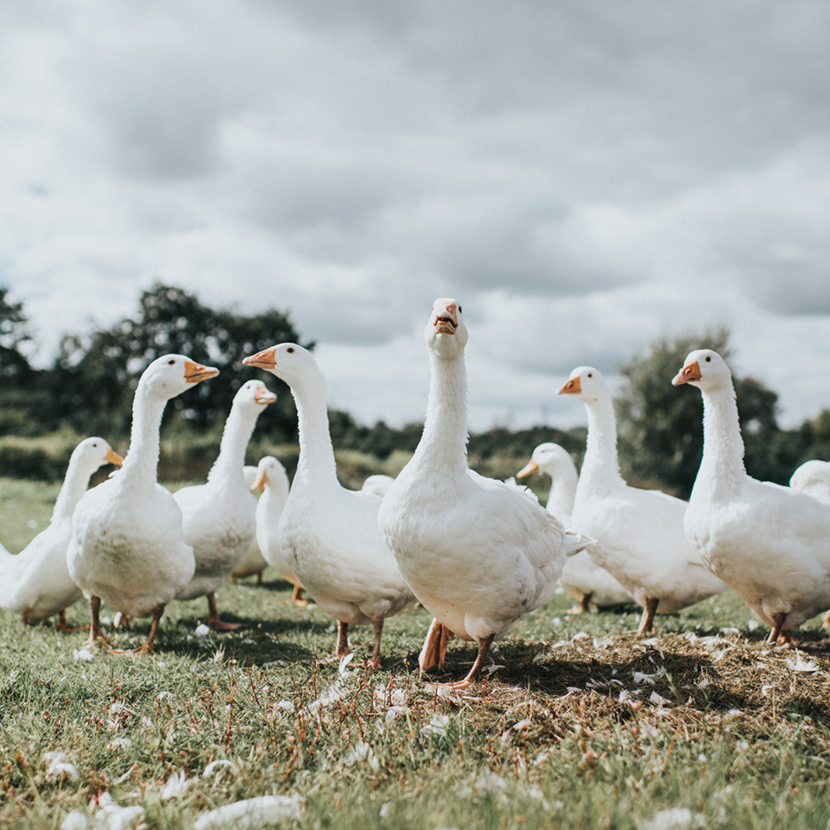
… and yet they have, in contrast to other farm animals, retained many of the qualities that their wild ancestors had. While domestic geese prefer to get around on foot and cannot fly (despite having strong wings), these lovable animals spend plenty of their time in the pasture doing things that we humans are familiar with. One of the most important activities that the feathered creatures engage in is maintaining relationships with members of their family and of their group. Sticking together and protecting loved ones are always their top priorities. They have very pronounced cognitive and social abilities. Their senses are on a similar level to those of wild geese. Their very pronounced hearing and good sight have long been well-known. Their ability to attribute even the slightest of sounds, and even to recognize colors, makes them very good “guard dogs”. Even as early as in Roman times, people knew about and appreciated these abilities – according to legend, it was geese that warned the Romans about attacks by the Gauls in 390 BC. They definitely have a very pronounced protective instinct, and anyone who comes across an angry goose should behave very carefully. Mommy and Daddy geese, in particular, have very clever ways of fighting back against potential attackers.
And even really young baby geese are clever
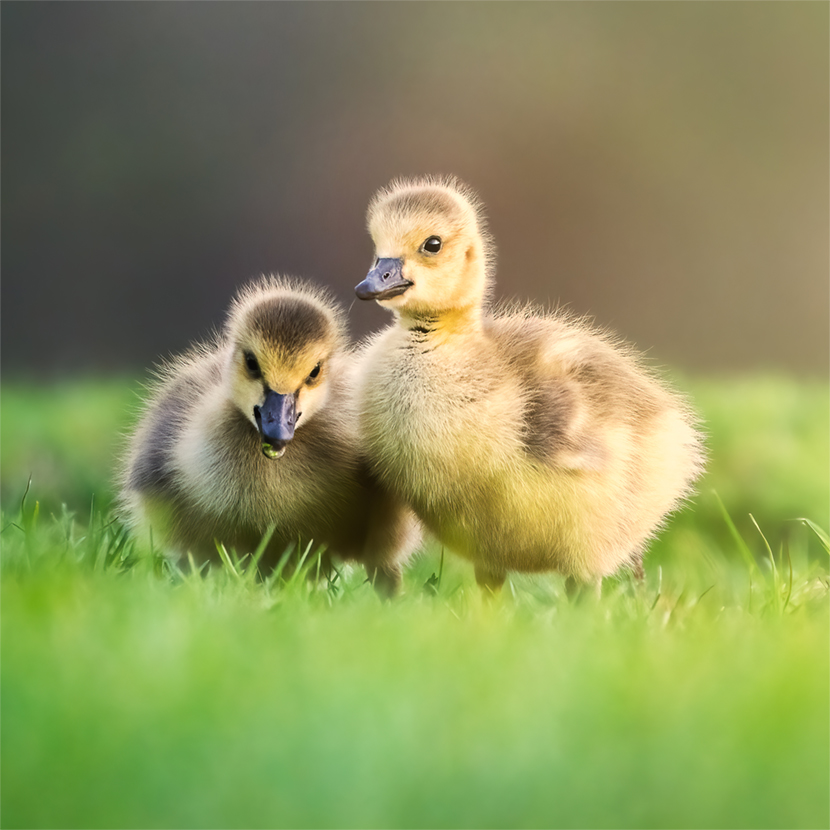
From a very early age, goslings are able to learn a great deal, and have a very good memory. The fact that even newly-hatched goslings are able to grasp abstract concepts clearly demonstrates that they have a certain basic level of intelligence. They are able, for example, to tell the difference between “same” and “different”, as researchers at the University of Oxford found out in experiments. The curious little goslings were able to distinguish clearly between different colors and shapes, and to recognize them again later. The experiments did not involve rewards – interest alone was motivation enough. “We aren’t able to say exactly what goes on in the gosling’s head; what it understands or is thinking. What we can say, though, is that goslings are able to make distinctions – and not just purely physical and visual ones: they also use the test objects’ abstract properties in order to identify them,” according to researchers Antone Martinho and Alex Kacelnik.
“you silly goose” or “stupid honking”
So, there’s no reason to use stupid phrases like “you silly goose” or “stupid honking”, because they don’t do the animals in question justice at all. The sounds made by geese are very varied and different. You don’t need to be an ornithologist to be able to hear the difference. The adult birds communicate very differently with one another than do the young birds with their parents, and geese’s everyday small talk sounds very different to the noises they make when they believe they’re in danger, or when they are overcome with joy.
Geese also have very pronounced social intelligence. If a member of the group is missing or cannot be seen, this gets noticed very quickly and the other geese call it and look for it. Keepers of geese say that missing members of the group are missed by the others, and that they are visibly overjoyed when the missing goose returns. And this phenomenon is not necessarily limited to the group of geese. One viral video shows a reunion between a goose and the person who had fed and reared the goose by hand. The goose’s initial joyous gabbling is followed by a heartfelt hug and cuddling – it’s no question that the goose is experiencing joy.
Friendships with other species of animal or with humans are no rarity, and reflect how sociable these birds are.
Seeing geese solely as a product or an object is very short-sighted, and demonstrates a lack of understanding for living, feeling beings. There are enough alternatives to goose down and goose meat – especially here at velivery. And we’re happy when we’re able to shed a slightly different light on how we perceive the world around us. On geese, for example – those sociable beings which invest lots of passion in their relationships and are there for their friends and community – unconditionally.
Here at Velivery, we hope that different times alto-GOOSE-er are on the horizon.
As the heroine of a children’s book from the 1950s, Petunia the goose, puts it:
“Just because people think that someone is intelligent (just because he carries a book under his wing, for example), it doesn’t necessarily mean that he’s clever.”
Let’s be clever in how we deal with what resources and fellow beings we have on this planet.
